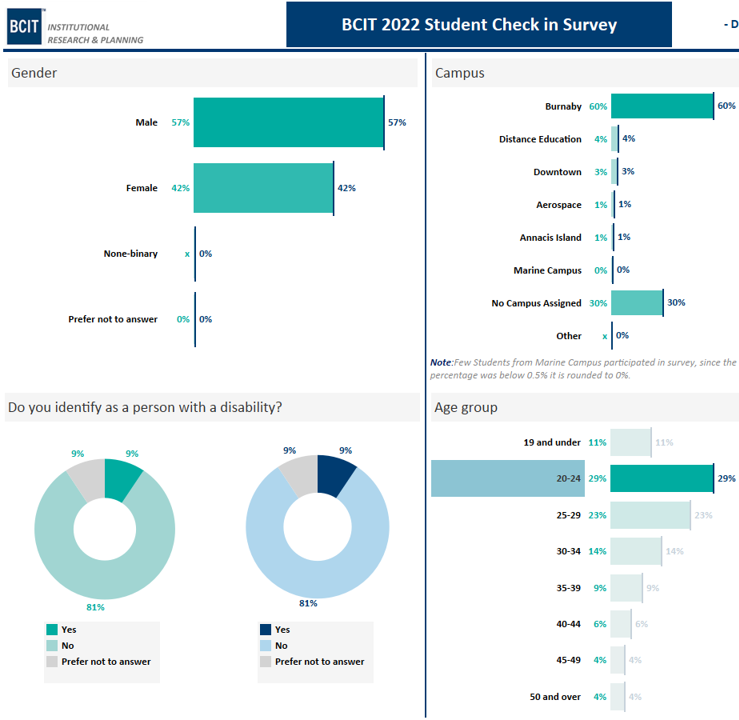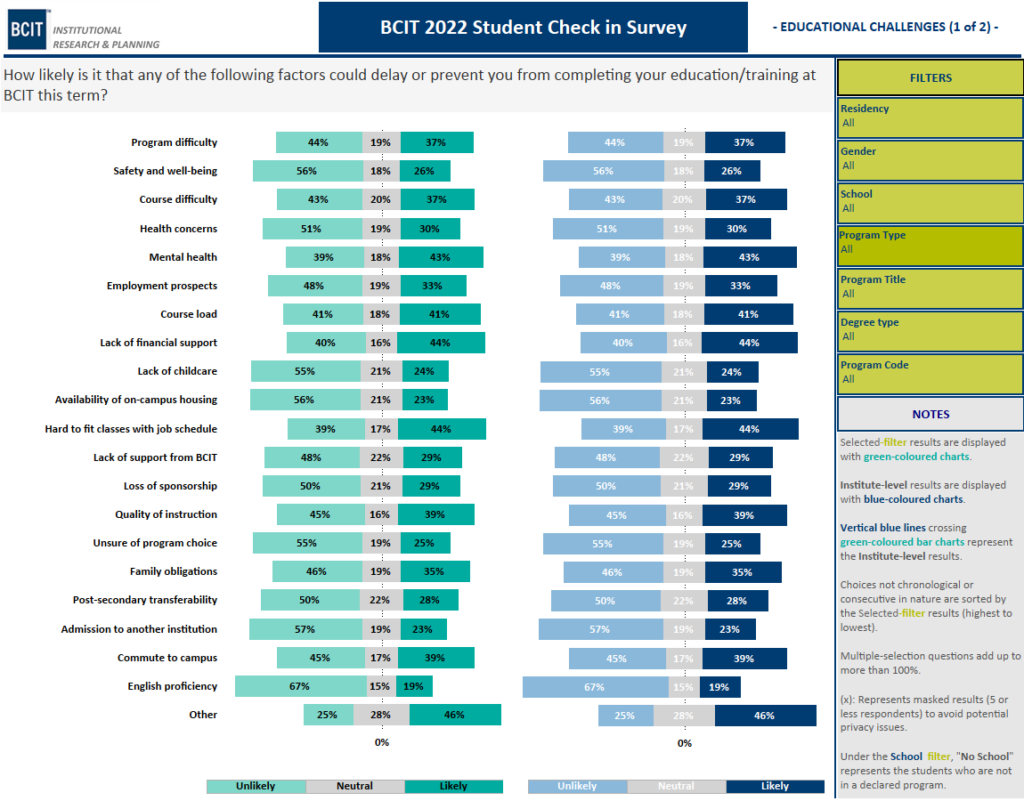Unit 1 Building and Sustaining Community Online
Thinking about the Needs of our Learners
Let’s start by thinking from the perspective of our learners. Think about all the course-related and non-course-related obligations you have while you take a course. How have all these various obligations affected you as you attempt to be successful at all of them?
As adults, we can’t escape our responsibilities when we sign up for a course. Adult learners, as we know, have many demands on their time, energy, and attention.
We also know that adult learners:
- continue to learn after completing their formal education.
- learn in purposeful, self-directed ways.
- need to know why they need to learn something.
- need to learn experientially.
- approach learning as problem-solving.
- learn best when the topic is of immediate value.
Further, at BCIT, we know from past surveys about our distance education students that they:
- are sometimes very succinct (in online postings) and sometimes very lengthy.
- don’t always read information about expectations, formats, etc.
- are busy, facing multiple demands.
- can find the course pace hectic.
- sometimes are challenged in their level of English expression.
- are responsible about learning.
- represent a broad age range (from 18 to 67).
- find the course workload heavy.
- find their workload heavy in general.
- have high expectations.
- have a range of computer skills, from novice to expert.
- are working professionals, very busy and with limited time.
- are sometimes away attending to family matters, on business, etc.
- have varied academic backgrounds, from grade 10 to university grads.
- sometimes have experience in the field and sometimes not.
- are anxious, especially at the beginning, facing packets of material with little sense of an instructor present.
- are sometimes waiting for guidance from the instructor.
(from an internal Learning & Teaching Centre survey for the TWEET workshop series, 2004)
More recently, we have the results from the Institute’s 2022 Student Check-in Survey Final Report[1] to give us another picture of who are students are.

Our students are not a homogenous group; they come to our courses with different values, expectations, and experiences. While all students are different, they have some common characteristics that they share when they start a course. They are all starting at the same time, they all want to learn, and they all want to succeed.
They will most likely share the same concerns too: Will they be able to cope with the work? Will they be able to get along with other students? Will the instructor be approachable?
Actively exploring these differences with students helps to create a safe and inclusive space in which students can start learning together. If students can relate to other students, by means of shared values, experiences, and backgrounds, they are on a good path to start learning together. And if they have different views, experiences, and perspectives, this can initiate interesting discussion, negotiation, and reflection. A good place to start is right at the beginning of your course. Think about how you can encourage participation and how you can create safe opportunities for shared learning amongst your students.
But having these things in common doesn’t mean that a cohort of students in a particular course exists as a community of learners. They do not yet have common learning experiences to draw on, nor do they necessarily share the ways of thinking that characterize the field of study. Therefore, an important task for you at the earliest stage of a course is to build a learning community by consciously creating lots of opportunities for students to connect with each other, with you, and with the topic on different levels, which in turn fosters belongingness.
Participation does not just happen in an online course. If you build it, there are still no guarantees that they will engage. There are many reasons for this:
- Participants may be unfamiliar with online courses.
- Participants may associate post-secondary classes with a lecture/listen model.
- Participants may feel very exposed commenting on something to people they cannot see and do not know.
- They have the sensation of being watched, which can be especially acute when participants sense that many are ‘lurking’ without posting and may inhibit participation.
- The value of participation may not be clear.
- There may be too many people in the group, so participants’ comments get lost… or too few, so conversation is slow.
From the BCIT 2022 Student Check-in Survey, when asked, “How likely is it that any of the following factors could delay or prevent you from completing your education/training at BCIT this term?”, students responded as follows:

As illustrated in the table, along with a lack of financial support, having it hard to fit classes in with a job schedule ranks as the top challenge our students face in completing their courses. Online learning delivery modes can overcome this challenge through distributed timing and delivery. We know that our students sign up for online learning opportunities because of its flexibility. However, if done poorly, online learning delivery modes also have the potential to make a challenging and complicated student schedule even more difficult.
When we attempt to match our instructional actions to our students’ needs, we do so in order to promote optimal learning conditions and guide our instructional decision making.
- * In the fall of 2022, BCIT’s Institutional Research sent out a survey to 21,625 students enrolled at that time across all schools and programs and received 3,222 responses (15% response rate after accounting for bounce-back emails). The purpose of the annual survey is to reach out to current students (full time and part time) and learn more about their needs, challenges, and future considerations. ↵

